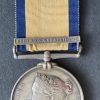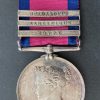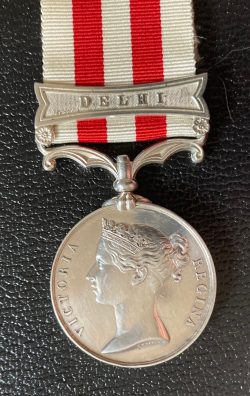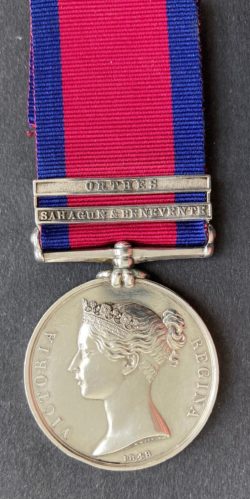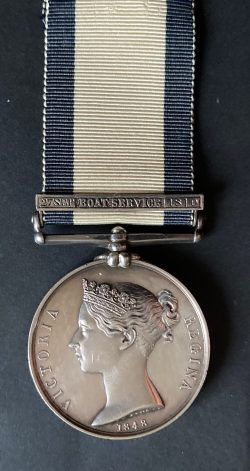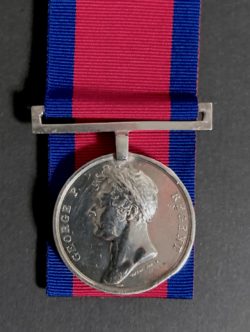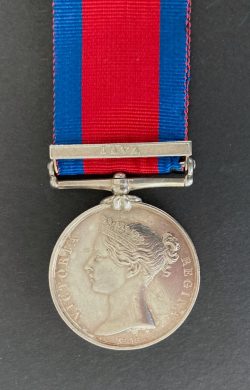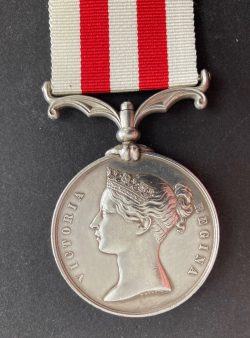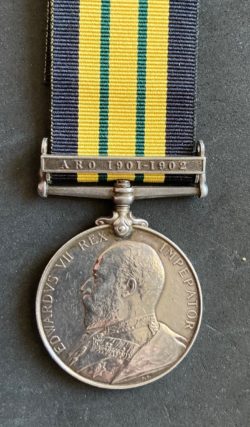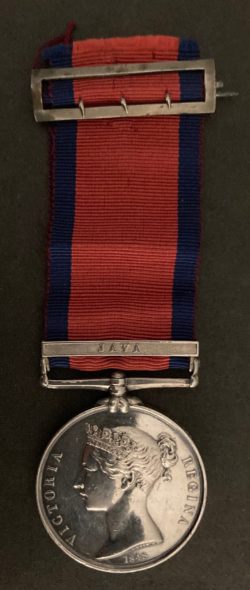An emotive M.G.S. 6 clasp to Gunner, Royal Artillery, served before New Orleans in the War of 1812 being grievously wounded by cannon shot resulting in the loss of his right arm and left leg
£3,300.00
Out of stock
Military General Service Medal, 6 Clasps: Vittoria, St. Sebastian, Nivelle, Nive, Orthes, Toulouse,
Gunner John Mason, Royal Artillery.
From Kilmannan, County Donegal, enlisted March 1807 aged 17, As a member of Michell’s 9th Artillery Battalion, he was initially present during the disastrous Walcheren campaign in 1809, and then fought in the Peninsula at the Battle of Vittoria on 21st June 1813, the siege and capture of San Sebastian from 17th July to 8th September 1813, the Battle of Nivelle on 10th November 1813, the Battle of Nive on 9th to 13th December 1813, the Battle of Orthes on 27th February 1814, and the Battle of Toulouse on 10th April 1814.
He then went on to see service over in North America, and was present in action at Bladensburg and Washington, and then through into 1815 in the Louisiana campaign, during which period he was desperately wounded, possibly at the disastrous assault on 8 January but more probably in the artillery duel on New Years Day 1815.
The batteries had to be erected between 8.30 P.M. on the 31st December, 1814, and 5.45 A.M. on the following day, and were weak as a result. They were constructed of sugar casks filled with earth not rammed, one cask in thickness, and backed up. They were only one cask in height, and, as the platforms were also a little raised, it followed that the gunners, when standing erect, were head and shoulders above the parapet. The platforms were very ill-laid, uneven, and unsteady.
The night was very dark, and the working parties were not collected without much difficulty; but on Sunday morning, New Year’s Day, 1815, at daylight, all was ready. A heavy fog, however, came on at 4 o’clock, and not until 9 o’clock was it possible to see the enemy’s works. During the interval, the columns of Infantry moved to their respective posts to be in readiness for the assault.
On the fog clearing away, the English batteries opened vigorously, and at first a little confusion was apparent among the Americans. This soon disappeared, however; and, as their batteries were strong, and the embrasures strongly constructed with cotton bags, they soon served their guns , and their heavy shot, penetrating the slight English batteries, caused a considerable number of casualties. After about three hours’ firing, the ammunition in the 10-gun English battery was nearly exhausted, the 7-field-gun battery had been silenced, a cheek of the heavy howitzer carriage was shattered, and several other injuries to the gun-carriage had been received. The heavy guns had, fortunately, received no injury; but want of ammunition soon compelled them to fall silent also. Even, however, if the ammunition had not failed, the nature of the batteries was such that the men could not have gone on much longer. The Americans fired from ten to twelve guns in their lines, and from four to five on the other side of the river, many of them being heavy guns—32-pounders and 24-pounders;—and although several of them had been dismounted by the fire of the English, the remainder were as active at the last moment as at any time during the day. The casualties among the Royal Artillery were as follows:—
Lieutenant Alexander Ramsay: mortally wounded. 12 Artillerymen killed. 13 Artillerymen wounded. (other sources quote higher casualties among the ranks
Mason’s papers record to have lost his right arm and left leg by shot, being discharged in August 1815.
Copy discharge papers confirming the wounding and subsequent discharge.
Prov Colonel Vigors collection





